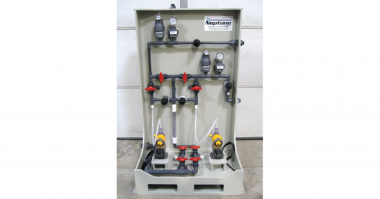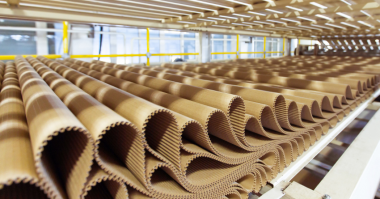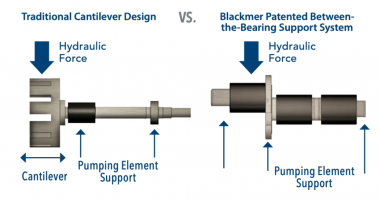In this Centrifugal Pump Minute, James Farley, Senior Director of Product Management for Griswold, discusses the likely causes as to why your centrifugal pump may be noisy or vibrating. James also provides several remedies to troubleshoot the problem.
The final condition that we’re going to talk to is going to be around by noise or vibration. There’s a lot of different issues that can contribute to a noisier or high vibrating pump in this particular situation again where we’re going to say the pump is operating discharge and suction valve is open.
I made a typo here. I didn’t delete this last one about varying temperatures running hot. That’s not relevant here. You got to pump the top radiant in the system and it’s vibrating or it’s creating excessive noise.
If you look at this, the first thing you’d want to check is improper alignment. If you have a coupling misalignment between the pump and the driver this is going to be your easiest thing to identify and easiest to resolve. Again we’ve got a video that covers coupling alignment and if you want more guidance there I would encourage you to look at that video.
You could also have a partially clogged impeller and this would also show itself as a reduced pump performance in terms of head or flow generation. You can remove that obstruction and that will could be the source of your excessive vibration. You could have a broken or bent impeller or shaft. This can be identified through some inspection techniques, that were spoken about in our previous webinar about pump inspection, where you can check for excessive run out of the shaft or the impeller.
This may require a replacement of one or both of those items. You can also have a foundation that is not properly is not rigid and that can cause a vibration of the base which supports the pump and the motor. So you need to check for the foundation, the rigidness of the foundation, you could have worn bearings and this would contribute to the failure. And then finally there are two other ones here where the suction or discharge piping is not anchored correctly. You might want to review the support there.
Finally, pump cavitation and pump cavitation can be can contribute significantly to vibration and noise within a pump. So that would be a scenario you need to review your NPSH available of your system to properly support or to determine if there’s a system NPSH available the issue that needs to be resolved.
Watch more Centrifugal Pump Minute videos.



